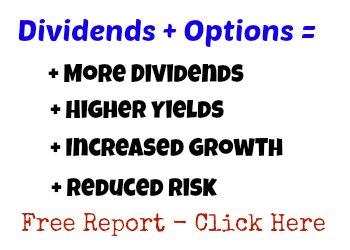Dividend Dates
Although dividend stock investing isn't brain surgery, dividend dates and a company's dividend calendar can still cause confusion.
Dividend Dates
There are four important dividend dates for the dividend investor to be aware of:
- Declaration Date
- Record Date
- ex-Dividend Date
- Payment Date
The Dividend Declaration Date is simply the date that a company announces its dividend, declaring the amount of the distribution, payable on a certain date to shareholders who own shares on or by a certain date.
That certain date that investors must own the stock in order to receive the distribution is called the Dividend Record Date. Related to the Dividend Record Date is the ex-Dividend Date. Ex-Dividend dates are two business days prior to the Dividend Record Date.
Ultimately, ex-Dividend Dates are the most important dividend dates to track. If you want to receive the distribution you must purchase the shares PRIOR to the ex-Dividend Date. If you acquire the shares ON or AFTER the ex-Dividend Date, you WILL NOT receive the dividend.
Finally, the Dividend Payment Date is the date you look forward to the most - the date you actually receive your payment. The Dividend Payment Date is also sometimes referred to as the Payable Date.
Dividend Calendar - Dividend Capture
There are plenty of online sites and resources for you to research and track stocks that pay dividends (and when they pay them). This is one I like. It's easy to navigate and easy to read.
And that naturally brings up another subject - the idea of Dividend Capture.
If you know when a stock goes ex-dividend, then all you need to do is purchase the stock the day before, wait one day to qualify for the dividend, and then sell it the next day. And you could just keep doing that, right? Pretty soon you'd be receiving quarterly dividend payments practically every day.
If only it were that easy.
The short version is that the dividend capture strategy really doesn't work. The market knows the distribution cycle as well, and all else being equal, the stock will trade down by the same amount of the dividend as soon as the stock goes ex-dividend.
Ultimately, the desire for Dividend Capture is just another one of those impulses for short term gains at the expense of building long term wealth. And the great irony is that, when done correctly and intelligently, gaining long term wealth is far easier than consistently generating all those short term gains.
Related Articles and Resources:
Create Your Own Dividend Reinvestment Program
Dividend Reinvestment Plans: A Leveraged Investing Alternative
High Dividend Stocks and Option Trading
Dividend Growth Investing: Why It's Superior To Growth Investing
Tweet
Follow @LeveragedInvest

>> The Complete Guide to Selling Puts (Best Put Selling Resource on the Web)
>> Constructing Multiple Lines of Defense Into Your Put Selling Trades (How to Safely Sell Options for High Yield Income in Any Market Environment)
Option Trading and Duration Series
Part 1 >> Best Durations When Buying or Selling Options (Updated Article)
Part 2 >> The Sweet Spot Expiration Date When Selling Options
Part 3 >> Pros and Cons of Selling Weekly Options
>> Comprehensive Guide to Selling Puts on Margin
Selling Puts and Earnings Series
>> Why Bear Markets Don't Matter When You Own a Great Business (Updated Article)
Part 1 >> Selling Puts Into Earnings
Part 2 >> How to Use Earnings to Manage and Repair a Short Put Trade
Part 3 >> Selling Puts and the Earnings Calendar (Weird but Important Tip)
Mastering the Psychology of the Stock Market Series
Part 1 >> Myth of Efficient Market Hypothesis
Part 2 >> Myth of Smart Money
Part 3 >> Psychology of Secular Bull and Bear Markets
Part 4 >> How to Know When a Stock Bubble is About to Pop



